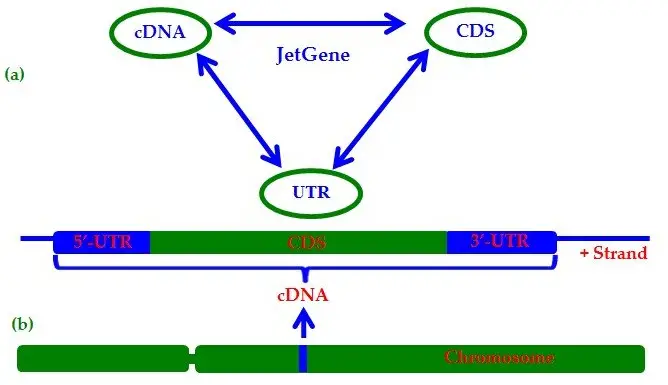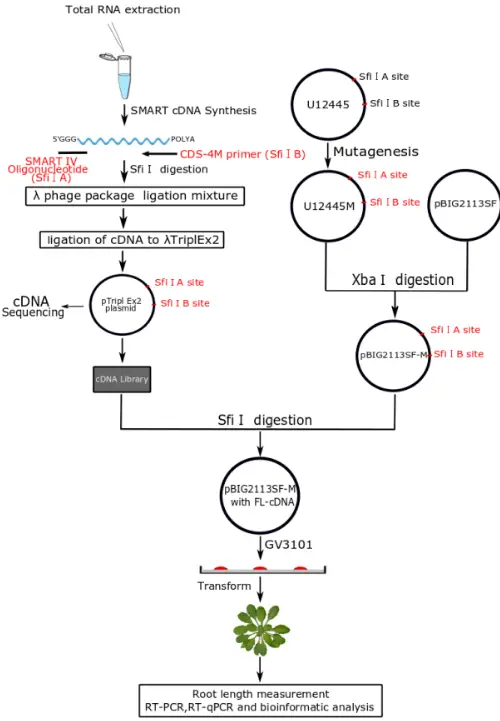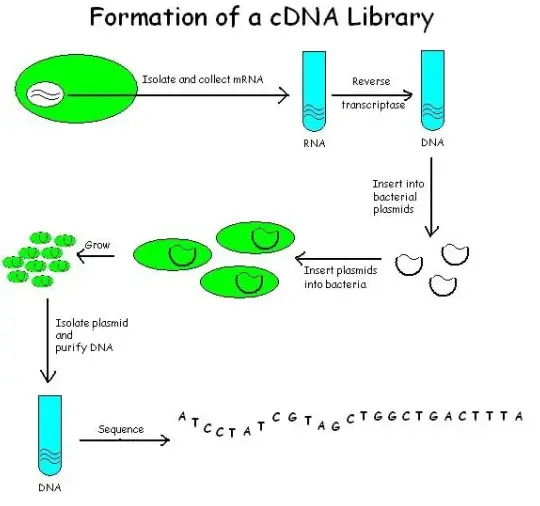The terms cDNA and CDs might seem unrelated at a glance, one belonging to the realm of genetics and the other a staple of technology history. Yet, both have played pivotal roles in their respective fields. cDNA, or complementary DNA, is synthesized from messenger RNA in a process that helps scientists understand gene expression. On the other hand, CDs, or compact discs, revolutionized data storage and music distribution in the late 20th century.
cDNA and CDs differ fundamentally in their composition and uses. cDNA is a synthetic form of DNA created in a lab to study gene functions and expressions without introns, which are present in genomic DNA. CDs are optical discs used to store digital data, whether it be music, software, or text, using laser technology to read and write data.
While cDNA serves crucial functions in medical and genetic research, CDs have largely been a medium for information dissemination and entertainment. Despite their distinct natures, both have been instrumental in advancing technology and science, demonstrating how innovations in different domains can have widespread impacts.

cDNA Explained
Definition and Creation
What is cDNA?
cDNA, or complementary DNA, is a form of DNA synthesized from a messenger RNA (mRNA) template. It differs from genomic DNA in that it only includes the sequences that are actively transcribed from DNA to mRNA. Without the introns, or non-coding regions, present in the original DNA, cDNA provides a simplified and direct reflection of the active genetic information within a cell.
How is cDNA Synthesized?
The synthesis of cDNA is a critical process in molecular biology, involving several key steps:
- Isolation of mRNA: Cells are harvested and lysed to release mRNA, which is then separated from other cellular components.
- Reverse Transcription: A special enzyme called reverse transcriptase is used to craft a DNA strand from the RNA template, creating the cDNA.
- Second Strand Synthesis: DNA polymerase is introduced to synthesize the complementary DNA strand, resulting in a double-stranded cDNA molecule.
Uses of cDNA
Research Applications
cDNA is a cornerstone in genetic research, enabling scientists to study gene expression without the complications of non-coding regions. Key applications include:
- Gene Cloning: cDNA is used in cloning experiments to express eukaryotic genes in prokaryotes.
- Gene Expression Analysis: Researchers use cDNA to analyze patterns of gene expression under various conditions or in different tissues.
Medical and Diagnostic Uses
In the medical field, cDNA has vital applications, such as:
- Disease Diagnosis: Detecting specific gene mutations by comparing the cDNA sequence with the normal gene sequence.
- Gene Therapy: cDNA is used to introduce new genes into patients’ cells to treat genetic diseases, such as cystic fibrosis or muscular dystrophy.
CDs Overview
Technology Basics
What are CDs?
Compact Discs (CDs) are optical discs used to store and retrieve digital data through laser technology. Originally developed for storing digital audio, the technology has expanded to include data CDs capable of storing any form of digital data.
Historical Development
The development of CDs marked a revolution in data storage and music distribution:
- 1970s: The technology was developed by Philips and Sony.
- 1982: The first commercial CD players and discs were introduced to the market, dramatically impacting the music industry.
CDs in Modern Use
Data Storage
CDs remain a reliable medium for archiving data due to their stability and longevity. Key points include:
- Capacity: Standard CDs can store approximately 700 MB of data.
- Durability: Unlike hard drives, CDs do not suffer from mechanical failure.
Multimedia Applications
Beyond audio, CDs have various uses in multimedia:
- Software Distribution: Many software programs are still distributed on CDs.
- Video and Multimedia: Enhanced CDs contain both audio tracks and computer data, allowing them to be used in computers and CD players.
Key Differences
Structural Distinctions
Composition and Physical Form
cDNA and CDs differ vastly in their composition:
- cDNA: A nucleic acid molecule, invisible to the naked eye and requiring sophisticated laboratory equipment for manipulation.
- CDs: Physical discs made of polycarbonate with a reflective layer, readable by laser technology.
Functional Contrasts
Role in Biology Versus Data Storage
The primary roles of cDNA and CDs also contrast significantly:
- cDNA: Essential for studying and manipulating gene functions in biology and medicine.
- CDs: Used primarily for storing and retrieving data in various formats, from audio to software.

Advantages and Limitations
Benefits of cDNA
Precision in Genetic Research
cDNA plays a pivotal role in genetic research by providing a more precise tool for examining gene expression. This precision stems from cDNA’s ability to represent only the expressed genes, omitting non-coding regions and introns, which are typically present in genomic DNA. This selective representation is crucial when researchers aim to:
- Identify gene functions and their regulatory mechanisms.
- Track changes in gene expression under different environmental conditions or stages of development.
Contributions to Medicine
The use of cDNA in medicine is profoundly significant, influencing both diagnostic and therapeutic approaches:
- Disease Diagnosis: cDNA sequences help identify genetic mutations responsible for diseases by comparing them with typical gene sequences.
- Targeted Therapies: cDNA is instrumental in developing targeted gene therapies, offering potential treatments for genetic disorders by inserting corrective genes into patients’ DNA.
Advantages of CDs
Durability and Capacity
CDs offer notable advantages in terms of durability and storage capacity, which make them attractive for data preservation:
- Longevity: CDs can reliably store data for up to 20 years if properly cared for, resisting damage from environmental factors like magnetic fields.
- Storage Space: With a standard capacity of 700 MB, CDs provide sufficient space for substantial data sets, including large software applications and extensive audio libraries.
Accessibility and Cost
Accessibility and cost-effectiveness are significant advantages of CDs, enhancing their appeal for both personal and professional use:
- Wide Availability: CDs are readily available and can be used in any standard computer or CD player.
- Low Cost: Manufacturing and purchasing CDs is relatively inexpensive, making them a cost-effective choice for distributing and storing data.
Limitations Comparison
Challenges with cDNA Stability
Despite its benefits, cDNA faces challenges related to its stability and longevity:
- Degradation: cDNA can degrade over time if not stored under optimal conditions, potentially complicating long-term studies and applications.
- Handling Sensitivity: cDNA requires careful handling to avoid degradation, necessitating stringent laboratory protocols.
Obsolescence of CDs in Technology
CDs have begun facing obsolescence due to the rise of more advanced storage technologies:
- Storage Limitations: With the advent of high-capacity storage options like SSDs and cloud storage, the relative storage capacity of CDs is now considered limited.
- Shift to Streaming: The shift towards streaming services for media consumption has diminished the demand for physical storage formats, impacting CDs’ relevance in the consumer market.
Impact and Evolution
cDNA’s Role in Science
Future Prospects in Genetic Engineering
cDNA continues to be integral in the field of genetic engineering, with promising prospects:
- Gene Editing: Techniques like CRISPR utilize cDNA for gene insertion, offering new ways to treat genetic disorders.
- Synthetic Biology: cDNA is fundamental in synthetic biology, enabling the construction of synthetic organisms by inserting new genes into their genomes.
The Future of CDs
Evolving Uses and Replacements
While CDs are becoming less prominent as primary data storage mediums, they are finding new life in other roles:
- Archival Purposes: CDs are still used for archival purposes where data integrity over long periods is critical.
- Niche Markets: Audiophiles and collectors value CDs for their audio quality and tangible aspect, ensuring continued demand in specific circles.
Frequently Asked Questions
What is cDNA?
cDNA, or complementary DNA, is synthesized from an mRNA template through a process called reverse transcription. This DNA form is single-stranded and mirrors the mRNA, excluding the non-coding regions found in the original DNA, making it crucial for studying gene expression and function in research and therapeutic settings.
How are CDs used today?
Despite the rise of digital streaming, CDs remain relevant in data archiving due to their durability and capacity. They are used to store data in a physical format that is less vulnerable to hacking and corruption compared to digital storage solutions.
What are the main advantages of cDNA?
The primary advantage of cDNA is its ability to represent only the actively expressed genes in a cell, excluding non-coding regions. This makes cDNA exceptionally useful for gene expression studies, genetic engineering, and therapeutic applications where precise genetic manipulation is required.
Why have CDs become less popular?
CDs have declined in popularity as digital and streaming alternatives offer more convenient access to multimedia and data storage. However, they are still used by audiophiles who prefer the audio quality of CDs and by those who value physical copies of media for collection purposes.
Conclusion
In exploring the differences between cDNA and CDs, we illuminate the remarkable breadth of human innovation. These technologies, though vastly different in application and structure, underline the diversity and evolution of scientific and technological advancements. cDNA continues to push the boundaries of medical science, while CDs, though less common now, remind us of the era when physical media was king.
As we advance further into the digital age, understanding these tools’ legacy and current roles helps appreciate how past innovations lay the groundwork for future discoveries and technologies. Both cDNA and CDs serve as educational touchstones in the continuous narrative of human progress.

